|
Radschool Association Magazine - Vol 30 Page 16 |
|
Privacy Policy | Editorial Policy | Join the Association | List of Members | Contact us | Index | Links | Print this page |
|
|
|
Avro Lancaster.
These pics are from the Saskatoon Control Tower as the crew of Avro Lancaster C-GVRA did a couple of passes at Saskatoon Airport (Canada) before going on to Winnipeg.
|
|
|
|
|
|
There's only two of these aircraft still flying in the world and recently one of them flew over Saskatoon to promote the Canada Remembers Air Show, August 2009. |
|
|
|
|
|
|
|
Over 400 Lancaster MK X's were built in Canada and shipped overseas for flying duty. In all, there were 7,377 Lancasters, of all Marks, built.
|
|
|
|
|
|
And throughout the entire world, only two still fly today, one in England and one in Canada. The bomber is 102 feet (31.1 metres) long and just under 70 feet (21.4metres) wide. As a comparison, the Hercules C130J is 98 feet (29.8 metres) long and 132.6 ft (40.4 metres) wide.
It can reach top speeds of 287 miles and hour and has four Rolls Royce Merlin Engines. |
|
PRESBYTERIAN: |
|
|
|
Men's Consideration for Women (by Kevin)
It is important for men to remember that, as women grow older, it becomes harder for them to maintain the same quality of housekeeping as when they were younger. When you notice this, try not to yell at them. Some are oversensitive, and there's nothing worse than an oversensitive woman. My name is Kevin. Let me relate how I handled the situation with my wife.
Since I retired several years ago, it has become necessary for her to get a full-time job along with her part-time job, both for extra income and for the health insurance benefits that we needed. Shortly after she started working, I noticed she was beginning to show her age. I usually get home from the golf club about the same time she gets home from work. Although she knows how hungry I am, she almost always says she has to rest for half an hour or so before she starts dinner.
I don't yell at her. Instead, I tell her to take her time and just wake me when she gets dinner on the table. I generally have lunch in the Men's Grill at the club so eating out is costly and not reasonable and I'm ready for some home-cooked grub when I hit that door. She used to do the dishes as soon as we finished eating. But now it's not unusual for them to sit on the table for several hours after dinner... I do what I can by diplomatically reminding her several times each evening that they won't clean themselves.. I know she really appreciates this, as it does seem to motivate her to get them done before she goes to bed.
Another symptom of aging is complaining, I think. For example she will say that it is difficult for her to find time to pay the monthly bills during her lunch hour. But, boys, we take 'em for better or worse, so I just smile and offer encouragement. I tell her to stretch it out over two or even three days. That way she won't have to rush so much. I also remind her that missing lunch completely now and then wouldn't hurt her any (if you know what I mean). I like to think tact is one of my strong points.
When doing simple jobs, she seems to think she needs more rest periods. She had to take a break when she was only half finished mowing the lawn. I try not to make a scene. I'm a fair man. I tell her to fix herself a nice, big, cold glass of freshly squeezed lemonade and just sit for a while and, as long as she is making one for herself, she may as well make one for me too.
I know that I probably look like a saint in the way I support her. I'm not saying that showing this much consideration is easy. Many men will find it difficult. Some will find it impossible! Nobody knows better than I do how frustrated women get, as they get older. However, guys, even if you just use a little more tact and less criticism of your aging wife because of this article, I will consider that writing this was well worthwhile.
After all, we are put on this earth to help each other.
Sincerely, Kevin
EDITOR'S NOTE:
Kevin died suddenly on March 1 of a perforated rectum. The police report says he was found with a Calloway extra long 50-inch Big Bertha Driver II golf club jammed up his rear end, with barely 5 inches of grip showing and a sledge hammer lying nearby. His wife was arrested and charged with murder... The all-woman jury took only 15 minutes to find her Not Guilty, accepting her defence that Kevin somehow, without looking, accidentally sat down on his golf club
|
|
ASTRONOMER: |
|
Dust Storm.
On the 23rd September 2009, a large chunk of central Australia was blown over to the east coast in the form of a dust storm. The photo below is how it looked in Brisbane.
What causes them??? Well, it’s not as simple as you might think……
As the force of the wind passing over loosely held particles increases, particles of sand first start to vibrate, then to saltate ("leap"). As they repeatedly strike the ground, they loosen smaller particles of dust which then begin to travel in suspension. At wind speeds above that which causes the smallest to suspend, there will be a heap of dust grains moving by a range of mechanisms: suspension, saltation and creep.
The fine particles swirl around in the air during the storm. The scary thing about a dust storm is that they can spread over hundreds of miles and rise over 10,000 feet (305 meters). They also have wind speeds of at least 40 kph. Not strong enough to blow the feathers off a chicken but still something worth avoiding.
A recent study finds that the initial saltation of sand particles induces a static electric field by friction. Saltating sand acquires a negative charge relative to the ground which in turn loosens more sand particles which then begin saltating. This process has been found to double the number of particles predicted by previous theory.
Particles on the ground become loosely held mainly due to drought or arid conditions and wind has varied causes. Gust fronts may be produced by the outflow of rain-cooled air from an intense thunderstorm, or they may represent a dry cold front, that is, a cold front that is moving into a dry air mass and is producing no precipitation. This is the type of dust storm which was common during the Dustbowl years in the USA. Following the passage of a dry cold front, convective instability resulting from cooler air riding over heated ground can maintain the dust storm initiated at the front. In desert areas, dust and sand storms are most commonly caused by either thunderstorm outflows, or by strong pressure gradients which cause an increase in wind velocity over a wide area.
The vertical extent of the dust or sand that is raised is largely determined by the stability of the atmosphere above the ground as well as by the weight of the particulates. In some cases, dust and sand may be confined to a relatively shallow layer by a low-lying temperature inversion. In other instances, dust (but not sand) may be lifted as high as 20,000 feet (6,100 m) high.
Drought and wind contribute to the emergence of dust storms, as do poor farming and grazing practices by exposing the dust and sand to the wind.
|
|
Baby's First Doctor Visit. A woman and a baby were in the doctor's examining room, waiting for the doctor to come in for the baby's first check up. The doctor arrived, and examined the baby, checked his weight, and being a little concerned, asked if the baby was breast-fed or bottle-fed. 'Breast-fed,' the woman replied. 'Well, strip down to your waist,' the doctor ordered. She did. He pinched her nipples, pressed, kneaded, and rubbed both breasts for a while in a very professional and detailed examination. Motioning to her to get dressed, the doctor said, 'No wonder this baby is underweight. You don't have any milk.' “I know that”, said the woman, I'm his Grandma, but I'm glad I came
|
|
A sandstorm can move whole sand dunes. Dust storms can carry large amounts of dust, so much so that the leading edge of one can appear as a solid wall of dust as much as 1.6 km (1 mile) high.
Dust storms don't just happen in the middle of the desert. They can happen in any dry area where loose dirt can easily be picked up. Grains of sand tossed into the air by the wind usually fall back down to the ground after a few hours. Smaller bits of particles stay in the air for a week or longer and can be blown thousands of miles away.
Don't be surprised if you suddenly see a dust storm heading your way. Dust storms usually arrive without warning and advance in the form of a big wall of dust and debris. The dust is blinding, making driving impossible. Often they only last for a few minutes but storms usually leave serious car accidents behind. If you're in a vehicle during a dust storm remind the driver to pull over to the side of the road and keep the headlights on.
During the 1960s there were eight dust storms that caused some serious damage; 13 more in the 1970s; 14 in the 80s and more than 20 in the 1990s. Recently Australia was having problems with dust storms. Researchers said the storms cost Australia about $20 million a year in medical bills because of asthma and respiratory disease which is thought to be caused by dust storms.
In mild dust storms it's still possible to walk around although you wouldn't want to. The best thing to do is find safe cover in a building or stay in your car.
|
|
DESPERATION:
When you rearrange the letters: |
|
|
|
Kopp-Etchells Effect.
When helicopters pass through dust storms, contact of the particles with the rotating blades produces either sparks or static electricity. The phenomenon has been observed during combat operations in Afghanistan. Michael Yon has documented the effect, and has named it after two U.K. soldiers, Corporal Benjamin Kopp and Corporal Joseph Etchells, who died in battle. It is now called the "Kopp-Etchells" effect.
|
|
|
|
|
|
When operating in sandy environments, sand hitting the moving rotor blades erodes their surface. This can damage the rotors and the erosion also presents serious and costly maintenance problems. |
|
|
|
|
|
|
|
The abrasion strips on helicopter rotor blades are made of titanium, which is very hard, but less hard than sand; so when a helicopter is flown near to the ground in desert environments abrasion occurs, and at night there is a visible corona or halo around the rotor blades, caused by the sand hitting the titanium and causing it to spark and oxidizing .
|
|
|
|
Using high octane fuel. RACQ
Putting a higher octane fuel in your car won’t boost its performance unless it’s designed for it. Australian motorists are wasting millions of dollars a year pumping high performance fuels into cars which gain no benefit from the high-profile, high-priced products. “The oil companies have for years encouraged the view that there is performance benefit in using a higher octane fuel because they sell the premium fuel as a premium product at a premium price,” warns NRMA vehicle specialist Jack Haley.
“Run a Commodore or Falcon or any car designed to run on 91 RON fuel on anything higher and you are just wasting money on octane. There is no advantage of power output simply by putting a higher octane fuel in unless the vehicle is designed to take advantage of it.”
Contrary to widely-held belief, the Research Octane Number (RON) of a fuel is not an indication of power density and does not indicate greater performance potential says Haley. “It is to do with the chemical makeup of the fuel,” Haley explains. “There are over 100 different hydrocarbons in petrol and by changing the proportion of those different components (during refining) you can change the RON. That has nothing to do with power output, it is entirely the resistance of the fuel to knocking (rough engine running or pinging).
“Most of the vehicles coming out of Europe are designed for 95 RON because that is what they settled on as their standard octane. Some of those will run on 91 RON with some loss of power, but some won't and those engines will `ping'. If you keep putting too low an octane fuel in those cars for a long time then it can lead to long-term engine damage. “The rule of thumb is one per cent per octane number, so if you go from 98 to 95 in a vehicle designed to run on 98 RON you will lose about 3 per cent of your power output or increase your fuel consumption by 3 per cent. However, if you use 98 RON fuel in a car designed to run on 95 there will be no benefit in power output or fuel efficiency.”
The growing availability of E10 fuel (a 10 per cent ethanol blend with basic unleaded fuel) is adding to the confusion and threatening the warranties of many who regularly us the cheaper fuel in high-end engines. "Ethanol just adds another level of complexity to the issue," Haley says. "The E10 fuels do have a higher octane rating but it is generally around 93 or 94 which is perfectly suitable for most cars that run on regular unleaded but still not high enough for most European engines.”
The
biggest danger is that the majority of those cars requiring the higher
octane premium fuels carry a claim to be ‘E10 compatible’ or ‘E10
Suitable’, a claim supported by the fuel companies using a list of
‘compatible’ models issued by the Federal Chamber of Automotive
Industries, the car industry's peak manufacturer body. The compatibility
claim for those cars requiring 95 or 98 RON fuel appears to be based on
the fact that the engines will indeed run on E10 fuel but not to an
optimum level and not without risk of damage which may not be covered by
warranty.
"The engines in our cars are E10 compatible in that they will run on the fuel but we do not recommend it," VW's Karl Gheling says. "The owners handbook recommends minimum 95 RON fuel and that is what the warranty is based on.” The E10 fuel currently available in Australia is not of a RON number recommended for our engines, but that is not to say a premium blend E10 will not be available in the future."
Mercedes-Benz spokesman David McCarthy says the E10 compatibility for engines rated at 95 and 98 RON should be regarded in the same light as a space-saver spare tyre. "It will get you out of a hole in an emergency situation but you can not run them long-term. Certainly the cars will run on it to get you to the next fuel station but it shouldn't be used on a regular basis."
|
|
Two men were sitting next to each other at a bar. After awhile, one guy looks at the other and says, 'I can't help but think, from listening to you, that you're from Ireland.' The other guy responds proudly, 'Yes, that I am!' The first guy says, 'So am I! And where about from Ireland might you be'? The other guy answers, 'I'm from Dublin , I am.' The first guy responds, 'So am I!' Sure and begorra. And what street did you live on in Dublin ? The other guy says, 'A lovely little area it was. I lived on McCleary Street in the old central part of town.' The first guy says, 'Faith and it's a small world. So did I! So did I! And to what school would you have been going'? The other guy answers, 'Well now, I went to St. Mary's, of course.' The first guy gets really excited and says, 'And so did I. Tell me, what year did you graduate'? The other guy answers, 'Well, now, let's see. I graduated in 1964.' The first guy exclaims, 'The Good Lord must be smiling down upon us! I can hardly believe our good luck at winding up in the same bar tonight. Can you believe it? I graduated from St. Mary's in 1964 my own self!'
About this time, Vicky walks into the bar, sits down and orders a beer. Brian, the bartender, walks over to Vicky, shaking his head and mutters,’ It’s going to be a long night tonight.' Vicky asks, 'Why do you say that, Brian'? 'The Murphy twins are pi**ed again.
|
|
Antibacterial soaps: Unnecessary risks, no benefits! Sarah Krupp
Make no mistake about it. They are everywhere. Your body is swimming in them, the keyboard on your computer is blanketed, and that money you have in your wallet is a virtual minefield. Bacteria are omnipresent.
Unfortunately, it's not that simple.
For starters, there is little proof that the antibacterial soap you buy actually kills the most-dreaded microbes: S. aureus (staph) and E. coli. Plus, living in a disinfected bubble can actually be bad for your health and the environment. Many experts believe that too much sanitization weakens the immune system and may create lethal superbugs that are antibiotic resistant. If that's not enough, the bacteria-killing chemicals go down the drain and into our waterways, harming wildlife and via the food chain, potentially ending up back in our bodies where they can present health risks.
Although you have likely
heard at least some of this before, you probably still reach for the
antibacterial soap to clean your bathroom and wash your hands. The
psychological draw is undeniable. In fact, scientists' warnings have not
dampened the burgeoning market. Antibacterial products are a huge industry
and make up nearly 80 percent of all liquid soaps. In 2003, there were
fewer than 200 antibacterial products on the market; currently there are
over 3,000.
So, these antibacterial agents, having failed at their mission, are then washed down the drain where they go on to cause serious environmental problems. Even after water purification, a large percentage of the toxins remain, entering our waterways and our bodies. A 2007 study min the USA detected triclosan in seventeen out of twenty-one people. The chemicals were found in blood samples, urine, and breast milk. While it's not yet clear that these chemicals negatively impact humans, animal studies show that triclocarban interferes with rat reproduction and triclosan triggers tadpoles to mature into frogs at a much more rapid rate. Because of their unknown effects in humans, many scientists advise against taking the risk. There is also evidence that when triclosan is mixed with chlorine, even the low levels common in drinking water, it creates a toxin that has been identified as a probable carcinogen.
If triclosan and triclocarban are dangerous to humans, the smaller the body, the greater the harm they can cause.
|
|
THE EYES: |
|
|
|
Pollution.
Live Science has reported that the most polluted areas in the world
are typically little known even in their own
The kinds of pollution in these areas not only lead to cancers, birth defects, mental retardation and life expectancies approaching medieval levels, but the diseases are also often found all around the globe.
"They cause an enormous amount of misery and harm, especially to children," Richard Fuller, founder and director of the Blacksmith Institute, the New York-based environmental group who released a report on these areas said.
The Top 10 most polluted places for 2006, in alphabetical order by country:
Linfen, China, where residents say they literally choke on coal dust in the evenings, exemplifies many Chinese cities;
Haina, Dominican Republic, has severe lead contamination because of lead battery recycling, a problem common throughout poorer countries;
Ranipet, India, where leather tanning wastes contaminate groundwater with hexavalent chromium, made famous by Erin Brockovich, resulting in water that apparently stings like an insect bite;
Mailuu-Suu, Kyrgyzstan, home to nearly 2 million cubic meters of radioactive mining waste that threatens the entire Ferghana valley, one of the most fertile and densely populated areas in Central Asia that also experiences high rates of seismic activity;
La Oroya, Peru, where the metal processing plant, owned by the Missouri-based Doe Run Corporation, leads to toxic emissions of lead;
Dzerzinsk, Russia,
one of the country's principal chemical weapons
manufacturing sites until the end of the Cold War;
Norilsk, Russia, which houses the world's largest heavy metals smelting complex;
Rudnaya Pristan, Russia, where lead contamination resulted in child blood lead levels eight to 20 times maximum allowable U.S. levels;
Chernobyl, Ukraine, infamous site of a nuclear meltdown 20 years ago; and
Kabwe, Zambia, where child blood levels of lead are five to 10 times the allowable EPA maximum.
The research team analyzed 35 polluted sites, narrowed down from more than 300 nominated by local communities, non-governmental organizations and local, national and international environmental authorities. The team was made up of international environment and health experts, including faculty members from Johns Hopkins and Mt. Sinai Medical Centre serving on the technical advisory board of the Blacksmith Institute.
Sort of makes you glad you live in Australia – doesn’t it????
|
|
MOTHER-IN-LAW: |
|
|
|
Back Go to page: 1 2 3 4 5 6 7 8 9 10 11 12 13 14 15 16 17 18 19 20 Forward
|


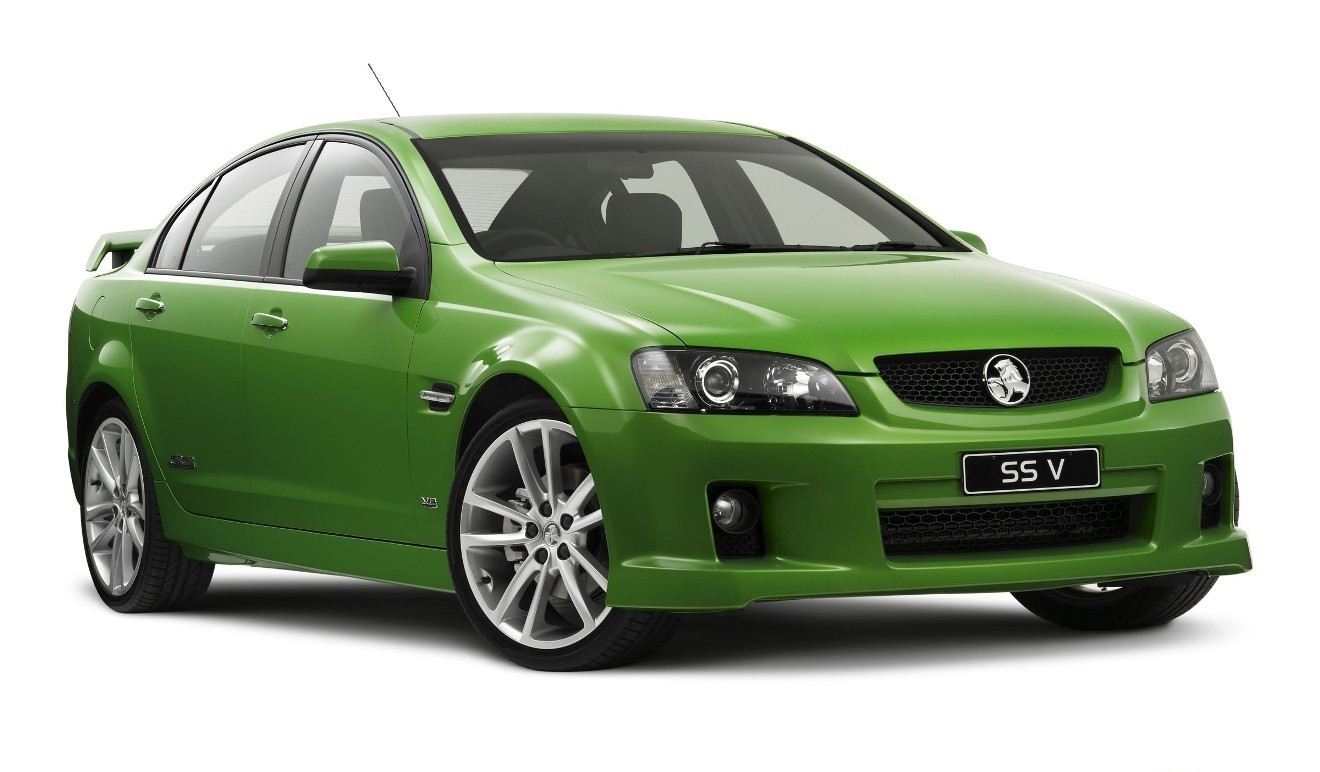
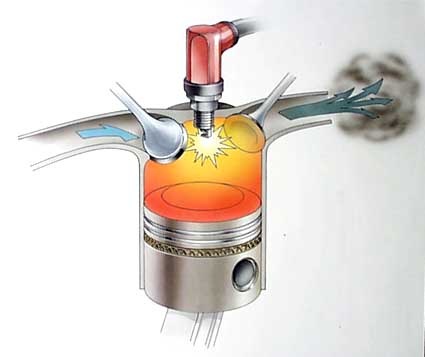
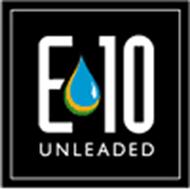
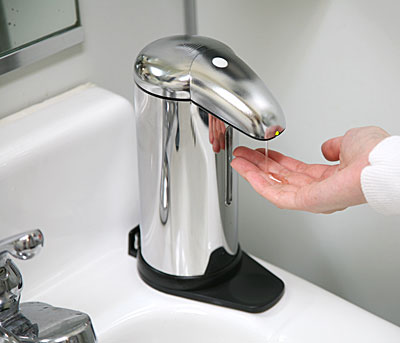
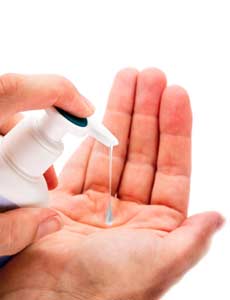
 countries, yet they in total afflict more than 10 million people.
countries, yet they in total afflict more than 10 million people.